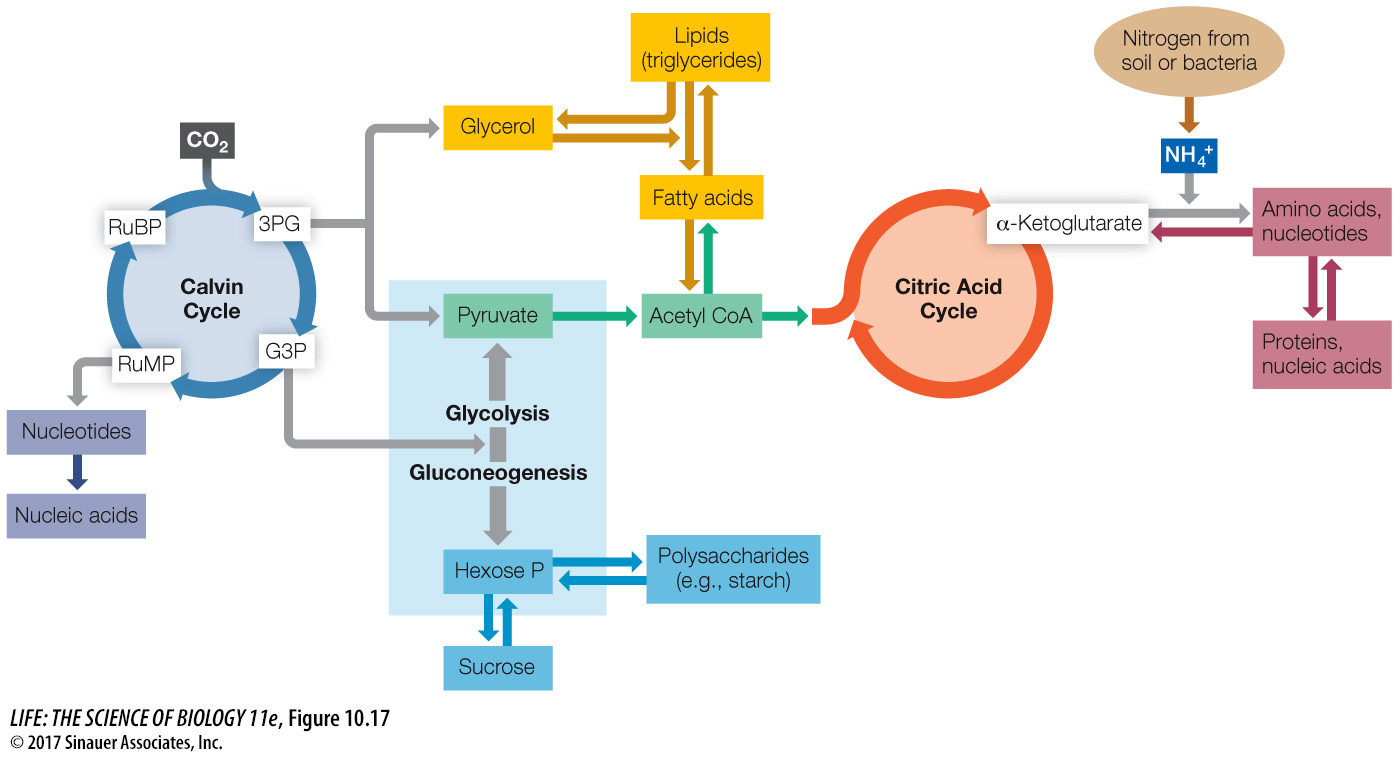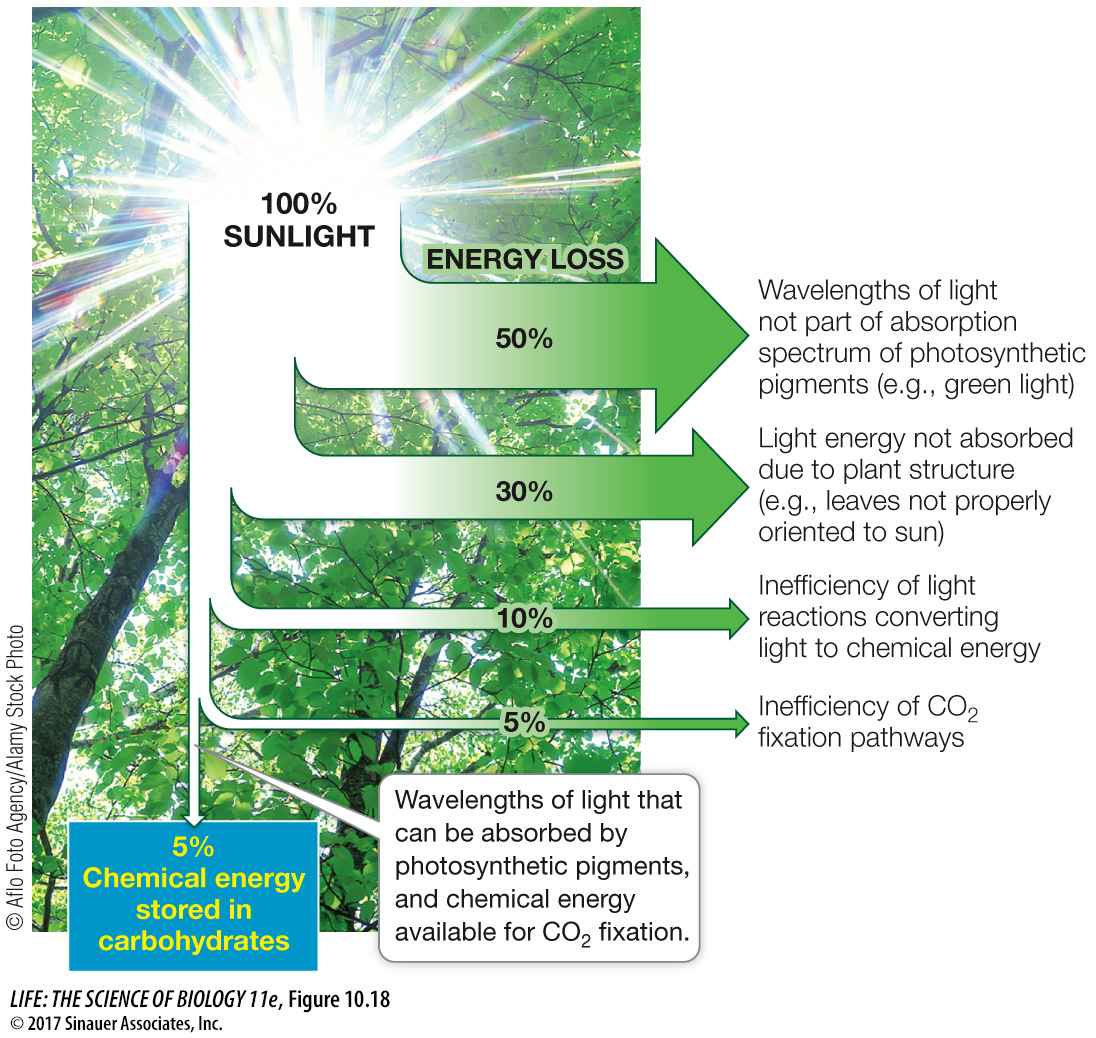Photosynthesis interacts with other metabolic pathways
Photosynthesis and respiration are closely linked through the Calvin cycle (Figure 10.17). The partitioning of G3P, the product of the Calvin cycle, is particularly important:
Some G3P from the Calvin cycle enters glycolysis and is converted into pyruvate in the cytosol. This pyruvate can be used in cellular respiration for energy, or its carbon skeletons can be used in anabolic reactions to make lipids, proteins, and other carbohydrates (see Figure 9.13).
Some G3P can enter a pathway that is the reverse of glycolysis (gluconeogenesis; see Key Concept 9.5). In this case, hexose phosphates (hexose P) and then sucrose are formed and transported to the nonphotosynthetic tissues of the plant (such as the root).

Energy flows from sunlight to reduced carbon in photosynthesis, then to ATP in respiration. Energy can also be stored in the bonds of macromolecules such as polysaccharides, lipids, and proteins. For a plant to grow, energy storage (as body structures) must exceed energy release; that is, overall carbon fixation by photosynthesis must exceed respiration. This principle is the basis of the ecological *food chain, as you will see in later chapters.
*connect the concepts Chapter 57 describes the sequence of energy flow through a community, including food chains and food webs.
Photosynthesis provides most of the energy that we need for life. Given the uncertainties about the future of photosynthesis (because of changes in CO2 levels and climate change), it would be wise to seek ways to improve photosynthetic efficiency. Figure 10.18 shows the various ways in which solar energy is used by plants or lost. In essence, only about 5 percent of the sunlight that reaches Earth is converted into plant growth. The inefficiencies of photosynthesis involve basic chemistry and physics (some light energy is not absorbed by photosynthetic pigments) as well as biology (plant anatomy and leaf exposure, the oxygenase reaction of rubisco, and inefficiencies in metabolic pathways). While it is hard to change chemistry and physics, biologists might be able to use their knowledge of plants to improve on the basic biology of photosynthesis. This could result in a more efficient use of resources and better food production.
